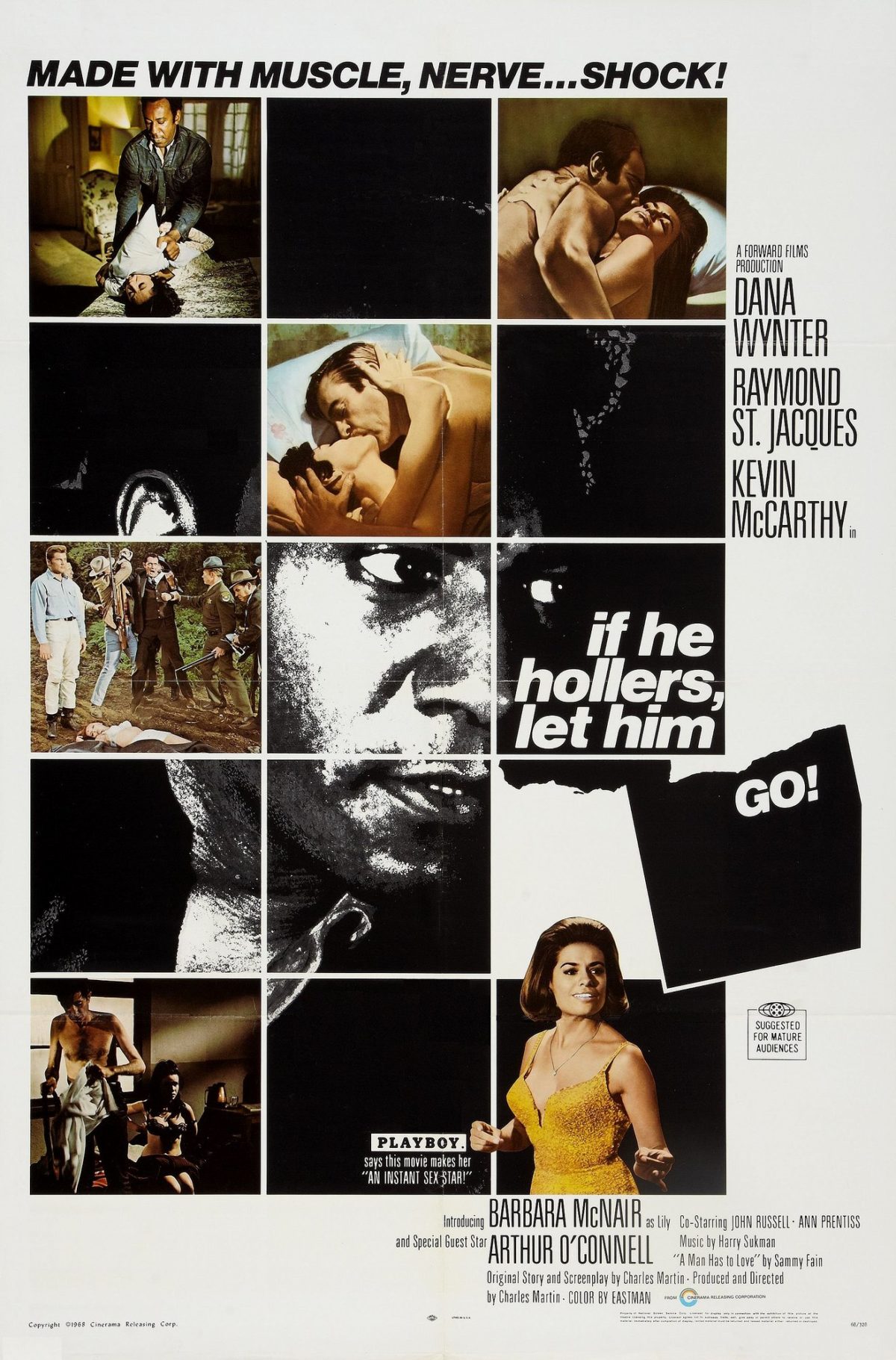In these first chapters of If He Hollers Let Him Go, my mind has been swirling as I attempt to understand to navigate this world Himes has displayed. Although If He Hollers Let Him Go does not seem to follow the Noir genre at first, it does as it explores living on the bounds of society. However, unlike the case of Spade and Malloy, Bob is unable to escape these bounds of society as they are dictated by race. In this novel, the readers can get a glimpse of what life is like for people of color. Looking at the examples of Bob in the workplace and Alice’s upper-class family, who are stuck on the bounds of society, unable to escape because of their race.
First looking at Bob, as a black man in America, it is evident that even as he enters the workforce, he is not accepted nor respected in society, and because of this it is causing him severe distress: “Nobody bothered me. Nobody said a word. But I was tense every moment to spring” (4). This contrasts characters such as Sam Spade, who is smooth and controlled, and never worried at all. The bounds of society are where Spade wants to operate whereas Bob is forced to the bounds of society, not by his own choice. This force to the bounds of society shows the prominent role that race plays in the world Himes is describing, so much so that it cements someone in a certain role or position, always to be regarded as an outsider. Even as Bob enters the workforce, he is an outsider. In the shipyards, readers see a lot of tension between white women and black men; however, when called a racial slur by a white woman, the manager does not take Bob’s side. While this is not shocking, due to the time period, it is indicative of how race dictates a person’s role in society. Although white women and black men are both new to the workforce during this time, black men are still regarded as less than, solidifying them on the bounds of society, a place where Bob doesn’t want to be. At the beginning of chapter 5, Bob talks about the feeling of being included and how wonderful that felt. This shows that Bob does not want to exist on the bounds of society, but rather wants to experience this sense of inclusion and belonging.
Alice and her family similarly want to experience this sense of belonging, but are also on the bounds of society, even though Alice can pass for white and is a part of a higher class. Alice and her family are of a higher social class and Alice has more fair skin. She has been described by other characters as almost white; however, her family still feels the need to prove themselves and flaunt their wealth because they know that their race cements them on the bounds of society. Regardless of their class, they will always be seen as different and not be respected by the white upper class, which is why “passing” acts as a way to escape these bounds. Alice can exit the bounds of society that black people in this novel are pushed to; however, as she exits this one bound, she is once again pushed into another as she is not fully accepted by the black community either, as she is judged for being fair skinned by other characters such as Ella Mae. Even for a character who can “pass,” race still confines her to the bounds of society.
Unlike Spade and Malloy in our other examples of Noir, the bounds of society are not where these characters like Bob and Alice want to exist because in this world that Himes has depicted the bounds of society include discrimination and mistreatment, and they are inescapable, as they are determined by race, something that cannot be changed or muted, even for people like Alice.

I didn’t read Alice and her family as passing visually for white; at least, not where it concerns white people within the novel. My understanding is that they exist in a complicated space in which they enjoy material wealth, allowing them access to white spaces, with exception. Other Black people in the novel then see them as rejecting Black people they consider “beneath” them. I’d be interested in clarifying this reading in class, since I think it’s important in painting the full picture of the world Himes is creating.
As we continue to investigate whether or not Himes’s novel fits into the noir category or not, I think it is important to consider all of the consequences of the great point you make in the post. As you say, Ben is forced to the margins of society due to the color of his skin. This stands in stark contrast to the two protagonists in our previous books – they “descend into the darkness.” Such a descent indicates a willingness to explore the evil side of humanity rather than being a victim of circumstance and being forced to live within the evil side of humanity. To me, this means that a key aspect of the noir protagonist is missing up to this point in the novel, but I am eager to see how Ben evolves and becomes more (or less) like Spade and Marlowe. Another thing that I considered when reading your post is who may be a more likely candidate for a starring role as a noir protagonist in the novel. Personally, I think that someone like Dr. Harrison, Alice’s father, would be able to perform the typical role of descending into the darkness because he is black, but he is rich, and seems to be the type that could easily toe the line between the side of humanity that we talk about and the side that is reserved for noir books and films.